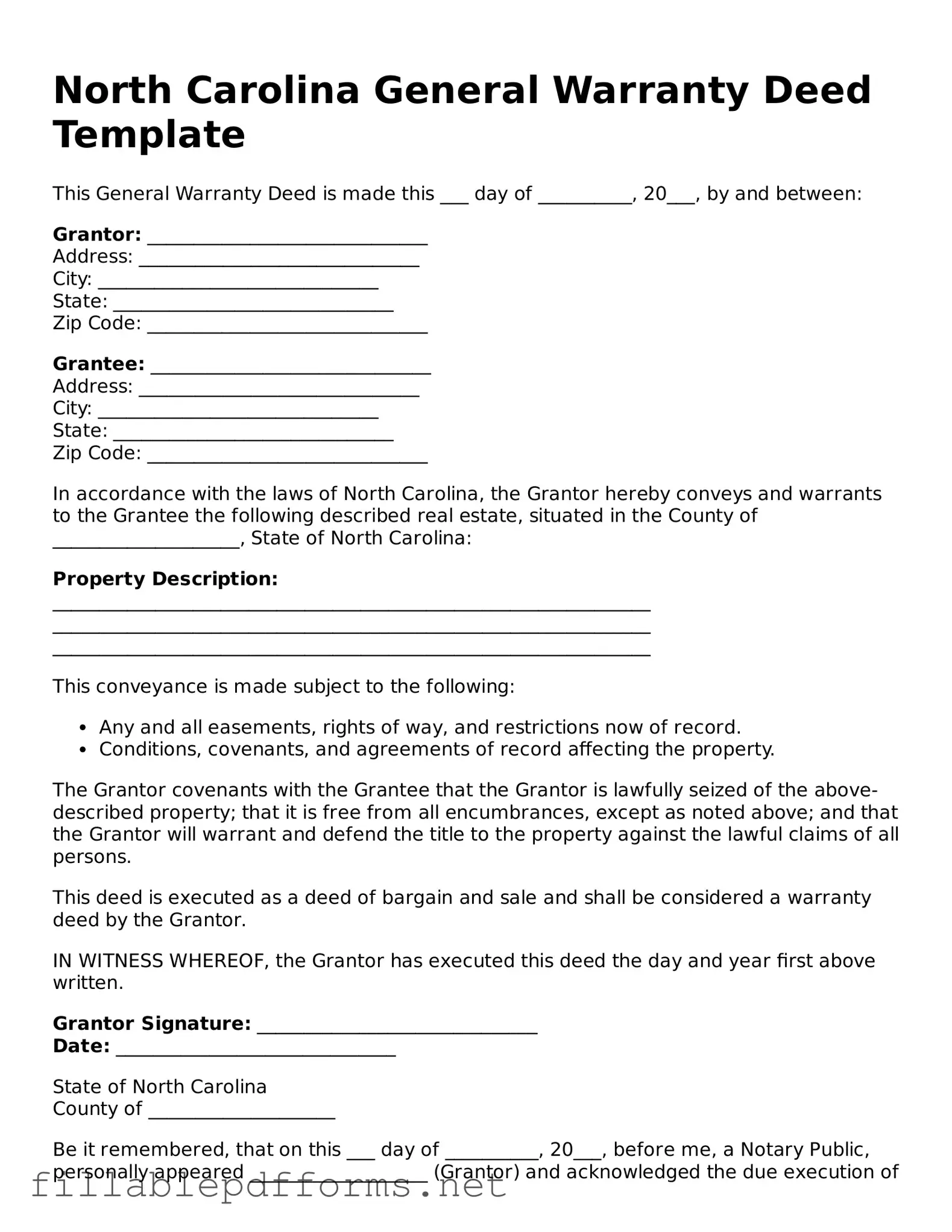The North Carolina Deed form plays a crucial role in real estate transactions, serving as the legal document that transfers ownership of property from one party to another. This form outlines essential details, including the names of the grantor and grantee, a description of the property being transferred, and any specific terms or conditions associated with the transfer. It is vital for ensuring that the transaction is legally binding and recognized by the state. Various types of deeds exist in North Carolina, such as general warranty deeds, special warranty deeds, and quitclaim deeds, each serving different purposes and offering varying levels of protection to the parties involved. Additionally, the form must be properly executed, which typically includes signatures and notarization, to be valid. Understanding the intricacies of the North Carolina Deed form is essential for anyone involved in real estate, whether they are buyers, sellers, or real estate professionals, as it lays the groundwork for a smooth and legally sound transfer of property rights.
